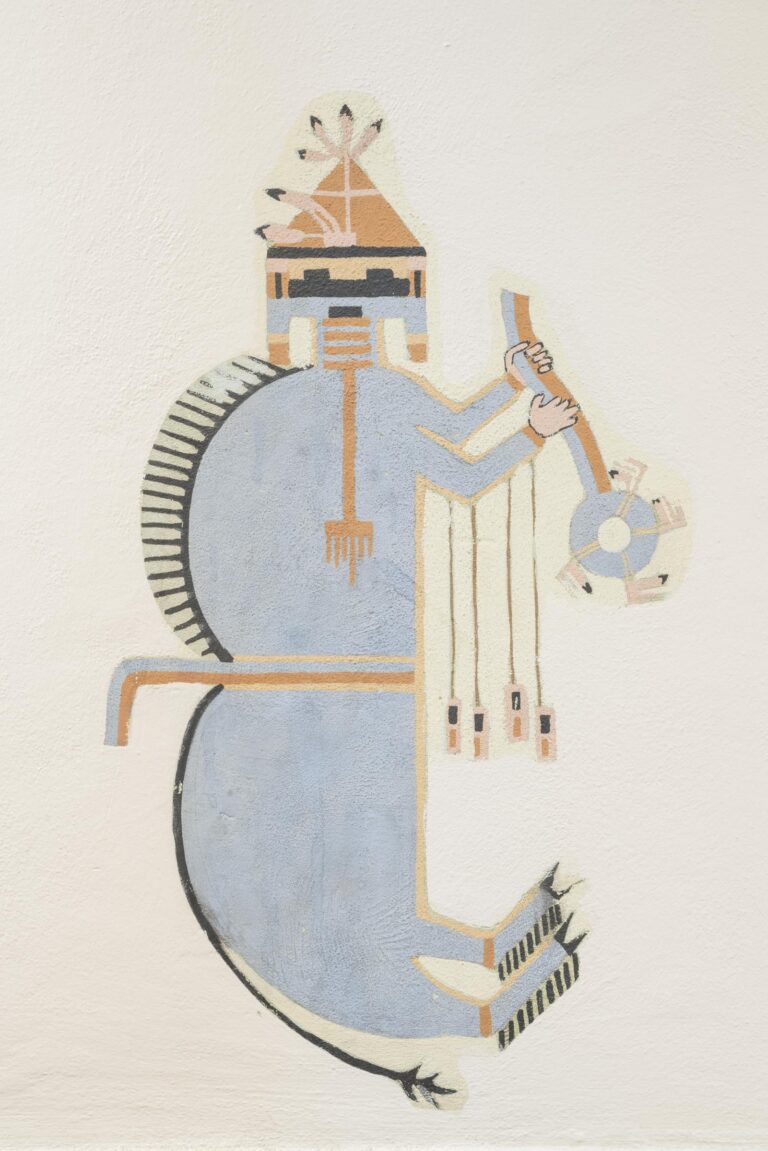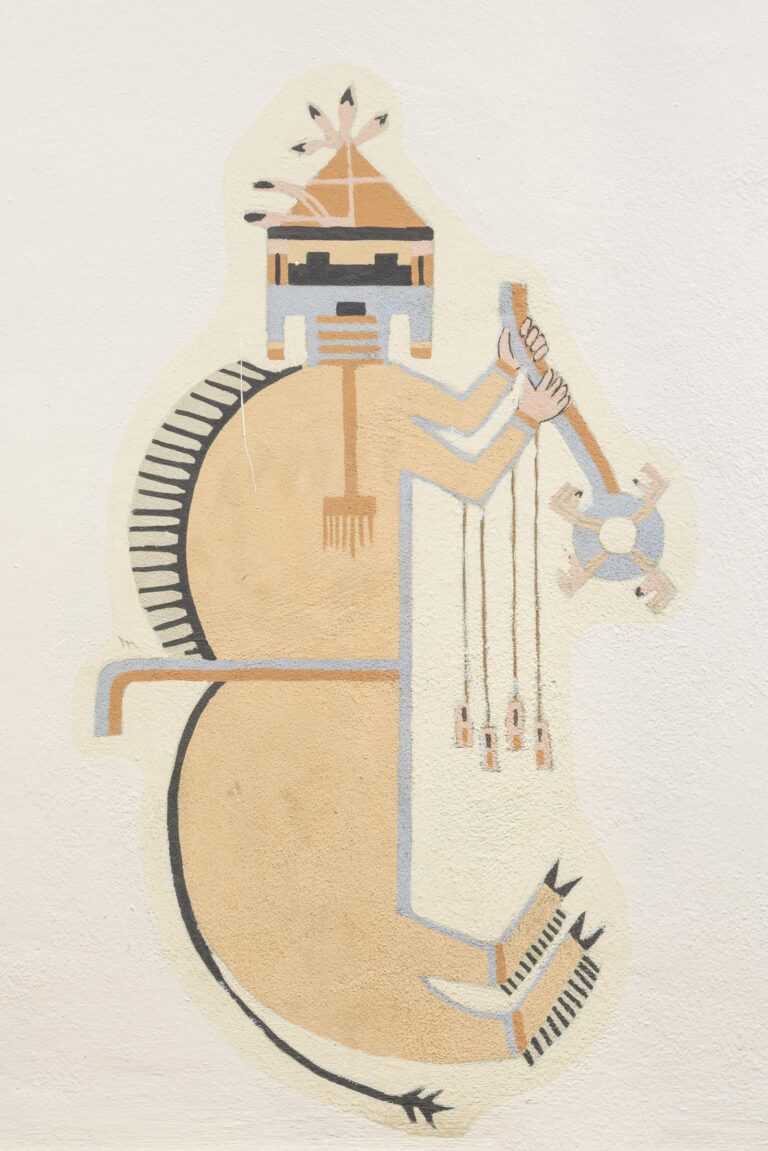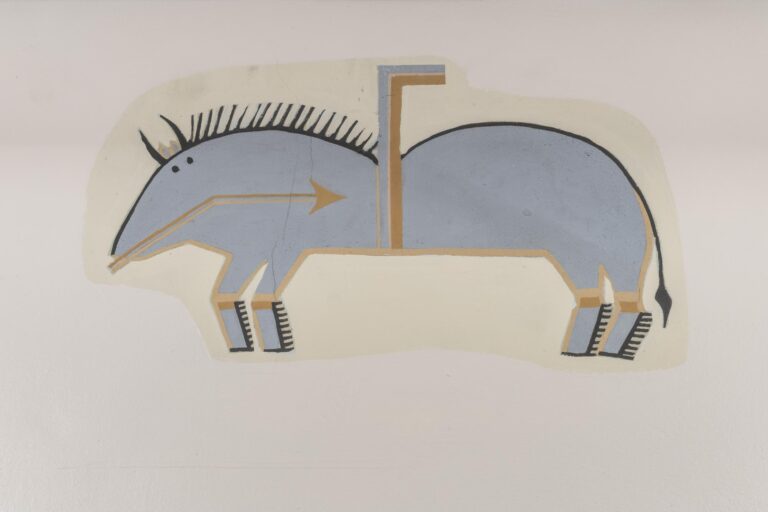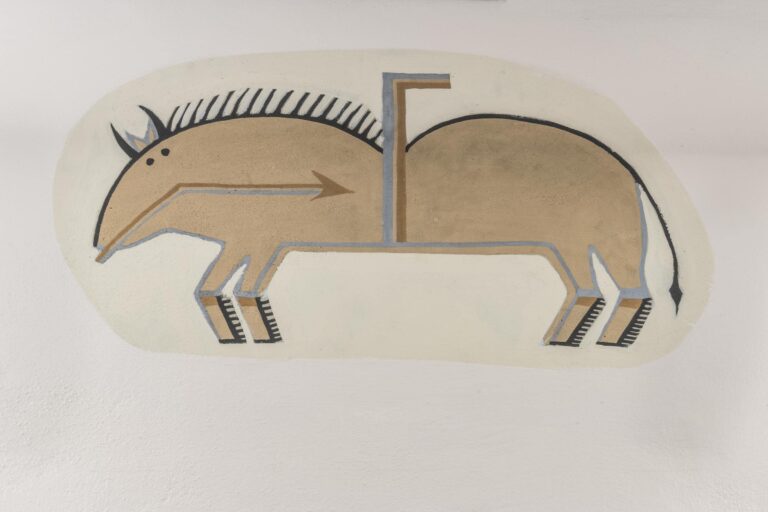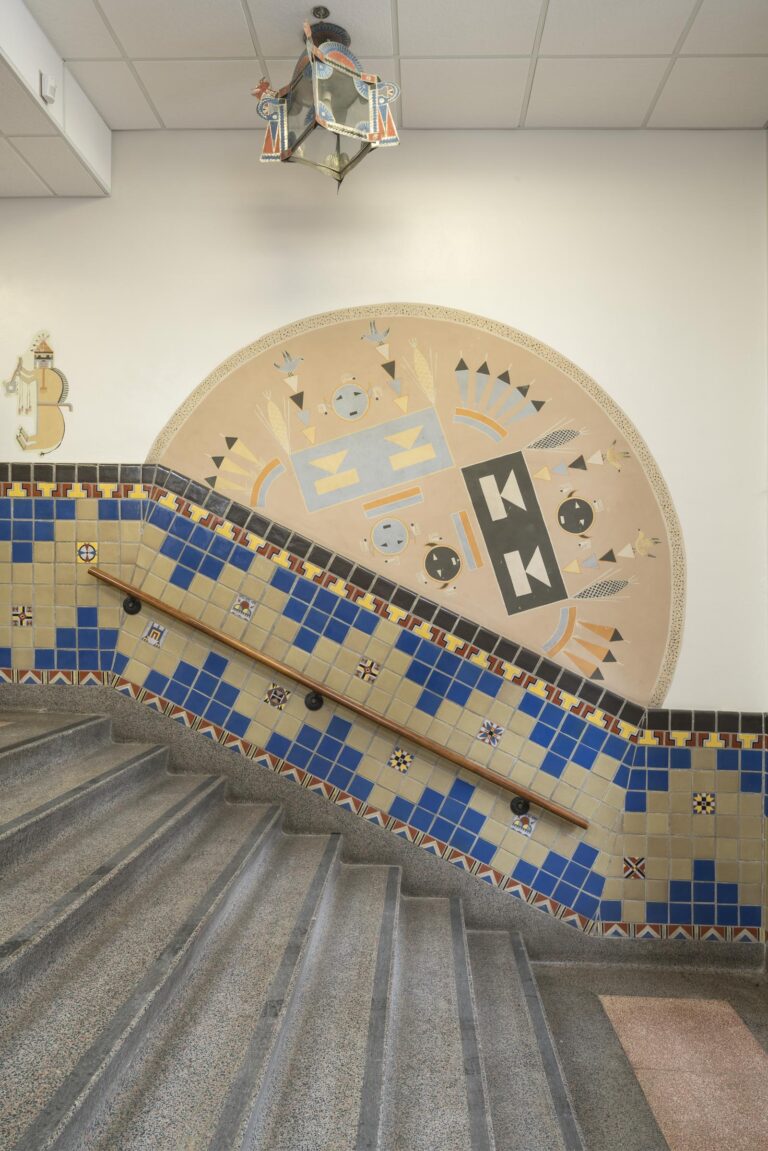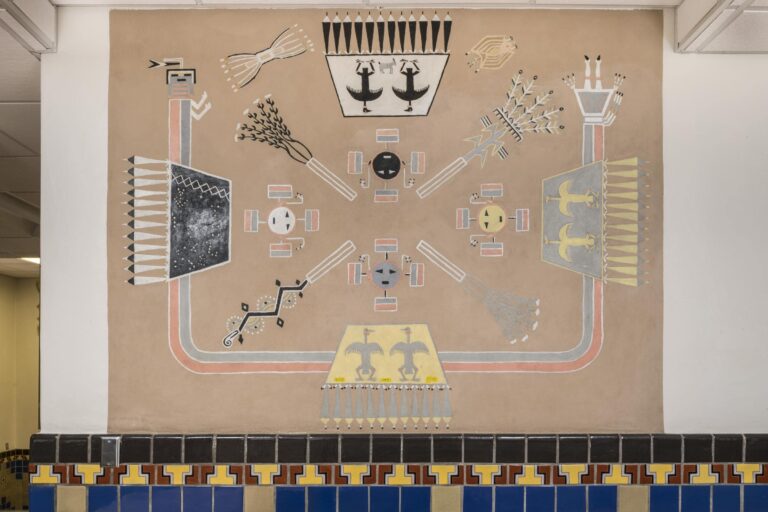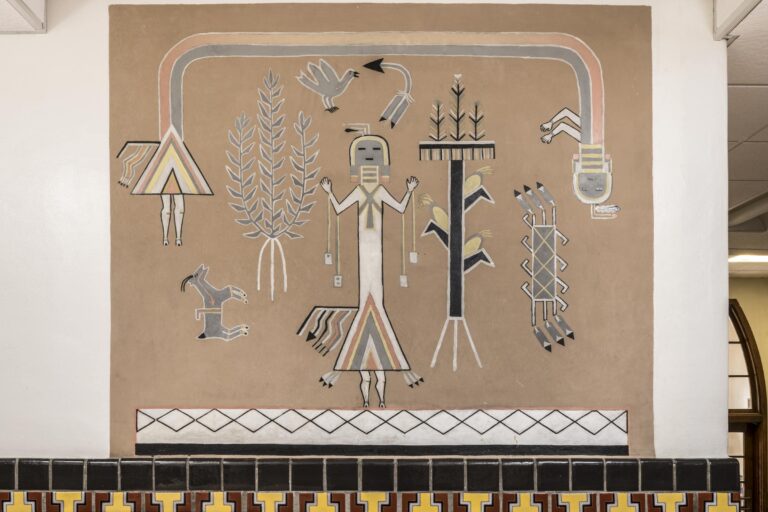According to a contemporary newspaper report, “a young Navajo painter” was selected by New Mexico’s New Deal art program in 1939 “to aid in a sandpainting reproduction on the ceiling of the entrance hall”1 of the McKinley County Courthouse built that same year (as a New Deal project itself). That newspaper article is the only known documentation for what is actually a series of sixteen Diné (Navajo) sandpainting-style wall paintings covering the first floor of the historic courthouse. Importantly, it names the artist of the courthouse’s other major mural, Lloyd Moylan, along with a New Deal art administrator and art instructor. The name of “the Navajo painter”—as they are referenced in the article—has yet to be recovered, however.
The fact that Native artists such as Harrison Begay, Timothy Begay, Allan Houser, and Jose Rey Toledo were publicly credited for their work by the New Deal, but the anonymous courthouse muralist was not, reveals the prevailing attitudes and biases of the era. The New Deal Native artists whose names we know were trained in a U.S. government school to produce Western art-style easel paintings and murals. Their artwork thus fits the Eurocentric definition of “fine art” espoused by the New Deal, and they were recognized in the same manner as their white artist counterparts: by name as individual creators.
New Deal artists like the anonymous courthouse muralist, making what were considered the “folk” or “lesser” forms of “handicraft,” “decorative,” and/or “traditional” arts, however, did not receive the same kind of recognition. As the above-referenced newspaper article reveals, the anonymous courthouse muralist’s sandpainting designs were seen as “reproductions,” not originals. Misconceptions of “traditional” Native arts as utilitarian and/or not imaginative or innovative persist today. Weaving, pottery, basketry, and jewelry, for example, are still often viewed not as singular works of art but as expressions of entire cultures and world views, and are still caught up in ideas of “authenticity” that prioritize conformity to historical standards.



